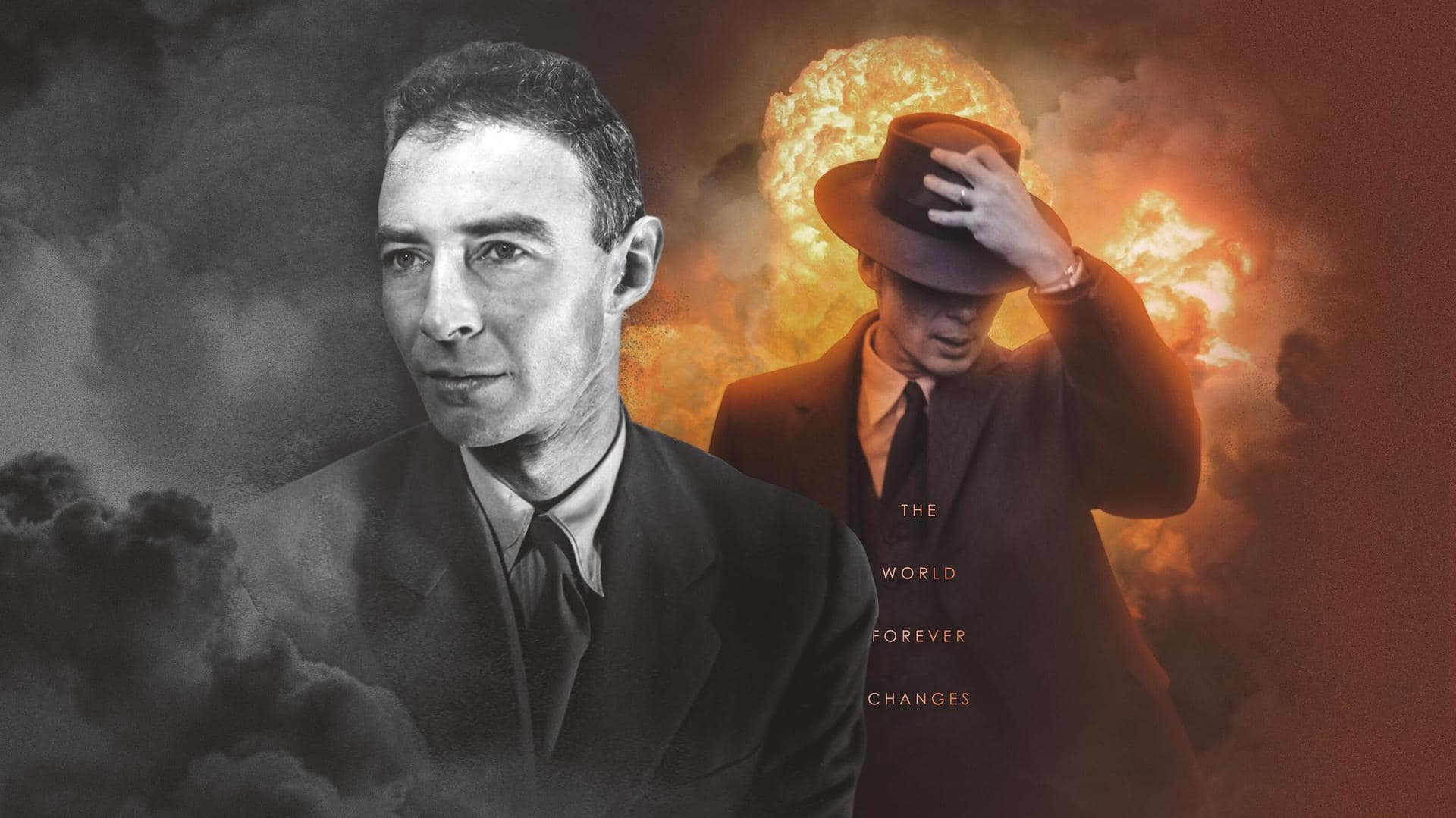
'Oppenheimer': Know the historical context behind Christopher Nolan's thriller
What's the story
It's getting harder and harder to contain our excitement for Christopher Nolan's Oppenheimer.
Touted as a controversial biopic, revolving around the contentious figure J Robert Oppenheimer—also regarded as the "father of the atomic bomb"—the film delves into a significant chapter of world history.
Before you step into the theater to watch this thought-provoking biopic, get familiar with the captivating history behind Oppenheimer.
Initial stage
Initial stage and the aim to develop the atomic bomb
At the onset of World War II, the US scientific community was fighting to catch up with Germany in atomic power.
In the early 1940s, the US government sanctioned a highly classified program, aimed to develop the world's first atomic bomb.
Over 1.30 lakh individuals were engaged in three key locations: Oak Ridge in Tennessee, Richland in Washington, and Los Alamos in New Mexico.
Details about project
Oppenheimer and the Manhattan Project
In May 1942, Oppenheimer was enlisted by the National Defense Research Committee Chairman to join a project authorized by then-US President Franklin D Roosevelt.
Oppenheimer was given the responsibility to tackle the neutron calculations necessary for the development of the atomic bomb.
Eventually, the notorious project came into existence in June, with Oppenheimer assuming the role of the director of the Los Alamos Laboratory.
Story behind name
What is the story behind the project's name?
Historian Robert S Norris revealed that the project was originally named the "Laboratory for the Development of Substitute Materials."
However, program director Major General Leslie Groves (portrayed by Matt Damon in the film) insisted on changing the name to avoid drawing any unnecessary attention to the secret mission.
Subsequently renamed "The Manhattan Engineer District," it was eventually simplified to the "Manhattan Project."
Trinity Test
Trinity Test: Oppenheimer named the site after John Donne's poetry
On July 16, 1945, at 5:30am, scientists at Los Alamos conducted a plutonium bomb test.
The test site, named Trinity by Oppenheimer was inspired by the poetry of John Donne, per historians.
Upon detonation atop a steel tower, a brilliant flash of light and a wave of heat engulfed the area, creating a massive mushroom-like cloud stretching approximately 40,000ft soaring through the sky.
Aftermath
Development of two atomic bombs and the aftermath
Uranimum-235 and plutonium are the two most essential components for creating nuclear power and atomic bombs.
Uranium was used in building the "Little Boy" bomb, which was dropped on Hiroshima on August 6, 1945.
Within three days, the US dropped "Fat Man" on Nagasaki on August 9, 1945.
The deadly aerial bombings together killed between 1.20-2.26 lakh people, most of whom were civilians.
Hearings
Oppenheimer's security hearings of April 1954
Oppenheimer told then-President Harry S Truman (played by Gary Oldman) that "I feel blood on my hands."
Soon after that, Oppenheimer's opposition to the war grew stronger.
When the US planned to develop a hydrogen bomb amid worsening relations with the Soviet Union, Oppenheimer publicly criticized the move.
This led to the infamous Oppenheimer security hearings in 1954—initiated by Lewis Strauss (Robert Downey Jr).